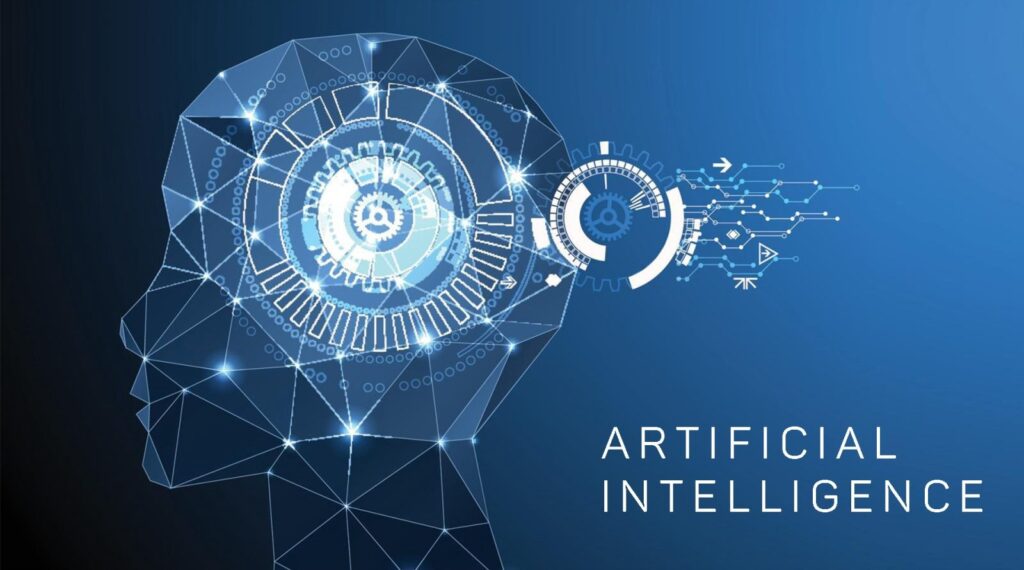Artificial Intelligence (AI) is a branch of computer science that deals with the development of algorithms, systems and technologies that can perform tasks that typically require human intelligence. It aims to create machines that can simulate the cognitive abilities of humans, such as reasoning, perception, learning and problem-solving.

The origins of AI can be traced back to the 1950s when researchers first began to explore the possibilities of using computers to mimic human intelligence. Over the years, AI has evolved significantly, becoming an integral part of many industries, including finance, healthcare, retail and manufacturing.
There are two main categories of AI: narrow AI (also known as weak AI) and general AI (also known as strong AI). Narrow AI is designed to perform a specific task, such as facial recognition or speech recognition, and is commonly used in industries like retail and marketing. General AI, on the other hand, has the potential to perform any intellectual task that a human can perform.
AI technologies include machine learning, natural language processing, robotics, computer vision and expert systems. Machine learning, in particular, has revolutionized the field of AI by allowing computers to learn and improve over time without being explicitly programmed. This type of AI uses algorithms that can identify patterns in data and make predictions based on that data.
The use of AI has numerous benefits for businesses and organizations, including increased efficiency and accuracy, improved decision-making, reduced costs and increased competitiveness. It also has the potential to improve our lives in areas such as healthcare, education, and the environment.
However, AI also poses significant ethical and societal challenges, such as job displacement, privacy concerns, and the potential for bias and discrimination. The responsible development and deployment of AI technologies is therefore crucial to ensure that they bring positive outcomes and do not perpetuate existing social inequalities.
Machine learning (ML) is a subset of artificial intelligence (AI) that involves the creation of algorithms and models that allow computer systems to automatically improve their performance on a specific task by learning from data. Machine learning algorithms can be supervised, unsupervised, or semi-supervised, and can be used to solve problems such as classification, clustering, and regression.

Supervised machine learning is used to predict an outcome based on input data. For example, a supervised ML algorithm could be trained on a set of labeled images of cats and dogs to predict whether a new image contains a cat or a dog. In this case, the algorithm is provided with labeled data, which it uses to learn to make predictions.
Unsupervised machine learning, on the other hand, is used to find patterns in data without any prior knowledge of the outcome. For example, an unsupervised ML algorithm could be used to cluster a set of customer data into different segments based on common characteristics.
Semi-supervised machine learning is a combination of supervised and unsupervised learning, where the algorithm is provided with both labeled and unlabeled data. This type of machine learning is used to make predictions with less labeled data, and can be more effective than fully supervised learning in certain cases.
Machine learning algorithms can be implemented using a variety of programming languages, including Python, R, and Julia. There are also a number of open-source machine learning libraries, such as TensorFlow and PyTorch, that provide a suite of algorithms and tools for implementing machine learning applications.
The use of machine learning is becoming increasingly popular in industries such as finance, healthcare, and retail, where it can be used to improve decision-making processes, automate workflows, and personalize customer experiences. Despite its many benefits, however, machine learning also raises ethical and privacy concerns, and requires careful consideration of issues such as data bias, data quality, and the transparency of the models being used.
Artificial Intelligence (AI) and Machine Learning (ML) are two terms that are often used interchangeably, but they are distinct from one another.
Artificial Intelligence is a broader concept that refers to the development of intelligent systems and machines that can perform tasks that usually require human intelligence. AI can be achieved through different approaches, including rule-based systems, expert systems, and machine learning.
Machine learning, on the other hand, is a subset of AI that focuses on the development of algorithms and statistical models that enable computers to learn from data. Machine learning models can be trained on large amounts of data to make predictions, detect patterns, and make decisions.
Another difference between AI and ML is that AI can be accomplished through different methods, such as rule-based systems, expert systems, and machine learning. Machine learning is a specific approach within AI that uses algorithms and statistical models to analyze and learn from data.
In terms of applications, AI can be applied to a wide range of industries, including healthcare, finance, retail, and more. Machine learning, on the other hand, is commonly used in applications such as image and speech recognition, natural language processing, and predictive analytics.
In summary, AI is a broader term that refers to the development of intelligent systems, while machine learning is a specific approach within AI that focuses on the use of algorithms and statistical models to analyze and learn from data.
